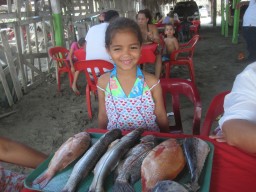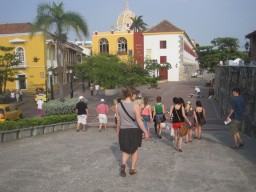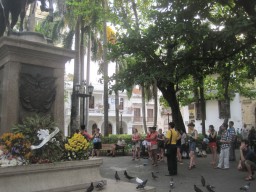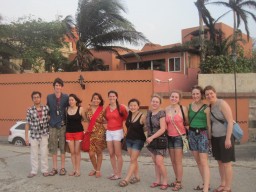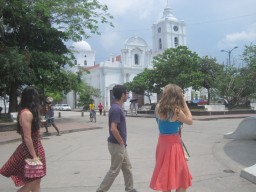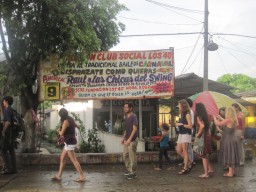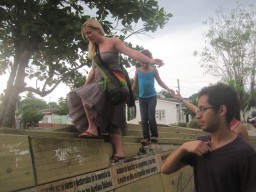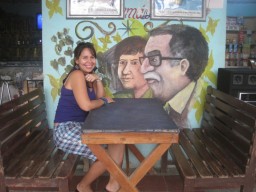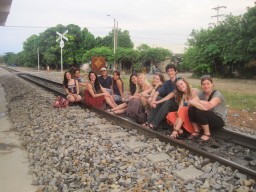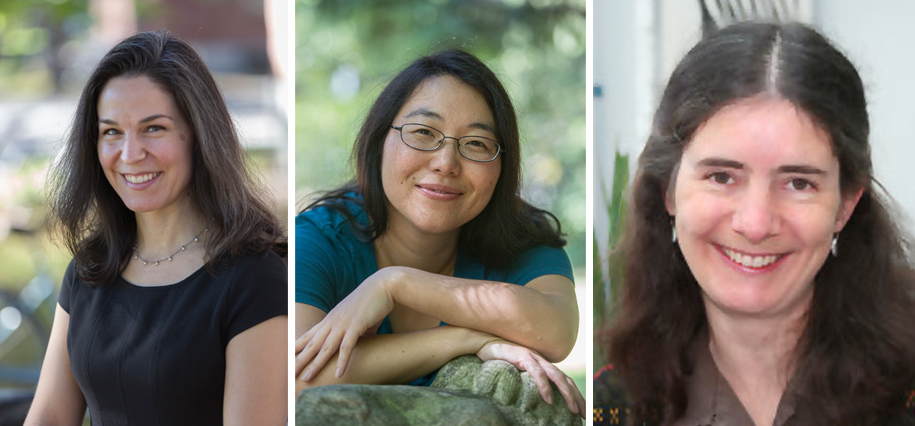Academic Trip to Colombia Makes Links Between Fiction and Reality
This story is a follow-up to an earlier preview of the trip.
The students in Nadia Celis’ Spanish class who traveled to Colombia over spring break came back to Bowdoin with more than just a deeper academic understanding of Colombian writer Gabriel García Márquez.
Although the focus of the trip was to explore the historical and cultural context of García Márquez, Celis said students gained another lesson. They also developed a new perspective on their identities as foreigners and Americans.
Celis, an assistant professor of romance languages, offered the supplemental trip to her students as part of her spring course, “A Journey Around Macondo.” Celis and Christine Wintersteen, director of International Programs and Off-Campus Study, accompanied the eight students on the trip, basing themselves in Cartagena and traveling to the northern Colombia to explore the milieu that gave birth to García Márquez’s fictional town of Macondo, where his magical-realist novel One Hundred Years of Solitude is set.
Richard Joyce ’13, a student on the trip, said the week he traveled around Colombia confirmed for him the power of fiction for portraying and influencing reality. “There is a real dialogue between the literature of García Márquez and the Colombian Caribbean,” he explained. “Furthermore, literature, art and other modes of cultural expression can serve as counter-forces to the invisible or forgotten forms of violence in the region.”
Referred to by locals in a not unfriendly way as “gringos,” the students quickly went from being watchers to being watched, Celis said. “I think that made them very self-aware,” she said, adding that one student commented to her that she had never realized she “was a racial subject and that being white means something.”
The themes addressed in One Hundred Years of Solitude include colonialism and the relationship between the United States and Latin America. Celis said the trip enabled the students to step into the novel’s world, despite the time that has lapsed since the book was published in 1967. “By being Americans there, you’re somehow participating in all these relationships of power,” she said. “We had very interesting conversations about that.”
Joyce reflected after the trip that he felt as if he has much to learn from the places and cultures of the Caribbean. “In the United States, I think there is a tendency to treat the Caribbean as a giant tanning salon or palm-tree filled playground, at the cost of ignoring lessons about the origins of capitalism, histories of violence, colonialism and imperialism, and alternative ways of living in body and place,” he commented.
Throughout the trip, students attended academic lectures, engaged with local scholars and participated in academically related cultural activities to connect their readings and theoretical understanding of the author. All academic activities were conducted in Spanish.
“I was impressed with the very meaningful impact that this trip had on its participants. I credit this to the deliberate sequencing of academic lectures and cultural activities, which created opportunities for personal discoveries,” Wintersteen said. “The dynamics of this group were also great — students maintained a high level of flexibility and sense of humor despite lukewarm showers and last-minute changes to the itinerary and remained engaged and curious throughout the trip!”
At least one student said she’s inspired to return. “I gained…a better understanding of Caribbean culture as a whole on the trip,” Cailey Oehler ’15 said. While she was in Cartagena, she also discovered an interesting nonprofit. “I found an organization in Cartagena called FUNSAREP which works to improve the lives of women and with which I would like to work during the summer of 2014.”
